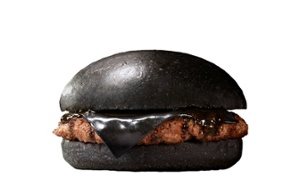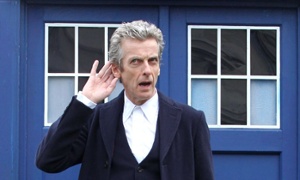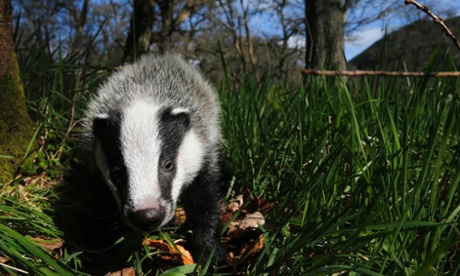
As an orange moon rose over the copse, Paul Smith stiffened and raised his thermal imaging scope to his eyes.
“There are three people on the hill,” he whispered.
He stepped out of the shadow of the trees and warily approached. A safety jacket glinted in the moonlight ahead – it was only other anti-cull campaigners.
The opening nights of the badger cull in Gloucestershire and west Somerset have been notable for one thing: a strange tranquility. Owls hoot, a badger drops a blackberry on its foraging and, apart from attempting to issue protesters with parking tickets for blocking country lanes, the authorities are taking a radically different “community” approach to policing the second year of the controversial cull.
“Have you seen any bats?” said one Gloucestershire police constable, intercepting anti-cull campaigners on a moonlit lane. “I’m a neighbourhood officer, I’ve been brought in to try and take the heat out of the situation. It’s lovely countryside here isn’t it?”
Such interventions – including police releasing a badger from a cage-trap to comply with the cull’s welfare regulations – are surreal when complaints of intimidation, harassment and heavy-handed policing were widespread on both sides last year.
But protesters believe the tranquility masks a change of tactics by culling contractors who can kill up to 1,876 badgers in both zones over the next six weeks. Instead of “free shooting”, badgers are being trapped in cages and shot at dawn.
Campaigners are dismayed that the two pilot culls are continuing with no independent monitoring despite the government’s independent panel of scientific experts concluding that last year’s shoot was inhumane and ineffective, failing to meet its 70% kill target by dispatching less than 39% of badgers in the Gloucestershire zone and less than 48% in Somerset.
“Everything’s failed – the politics, the democracy, the science, and this is what we’re left with – a farce,” said Jude Walker of Gloucestershire Against the Badger Shooting (Gabs) whose safety jacketed volunteers are undertaking their law-abiding nightly “wounded badger patrols” on public footpaths.
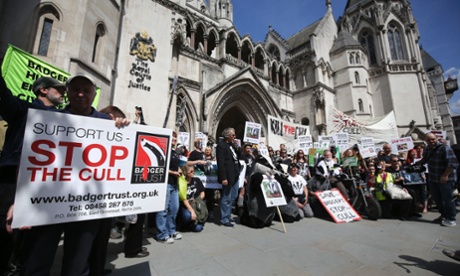
Most campaigners are retired librarians and civil servants, and even the much-maligned hunt saboteurs the Guardian meet during two nights in the Gloucestershire cull zone are non-violent vegans.
But three-quarters of Gabs’ volunteers are from outside the cull zone and many locals are hostile towards the campaigners’ collective presence.
“There’s no cull on our land, our leanings are probably towards saving the badgers and yet we were under siege for three months last year,” said the owner of one smallholding. “It’s like being stalked – cars going up and down the road all through the night, lights shining in our bedroom window, torches shone on us by people wearing balaclavas.”
Despite such hassles, farmers in the Gloucestershire cull zone believe they are already benefitting from the cull. As the sun sets, a dairy farmer showed me 28 pregnant holstein cattle on his rolling grass field.
“This is the future of my herd but these are the guys in the firing line because of bovine TB,” said the farmer, who like every farmer I spoke to requested anonymity for fear of reprisals.
Contractors told him they shot 92 badgers on his 500 acres last year. This summer, for the first time in a decade, not one of his 600 cows tested positive for bovine TB.
“I thought I would never go clear again,” he said. “When we became clear in May that was surprising. It was even more of a surprise to be clear when we were tested again in July. When we went clear, the only thing that had changed in the previous 12 months was the badger cull. I’m not saying stick the knife into the badger, I’m just saying what’s happened to me.”
For such farmers, the cull is a welcome addition to the government’s tightening of cattle movement controls and improving farm biosecurity to reduce the 26,000 cows slaughtered because of bovine TB each year in England. “Would I prefer to be farming in the cull zone with all the aggro or out of it? I’d chose to be in it with all the aggro,” said the farmer. “I won’t whinge, nobody is forcing me to be a farmer. We’ve just got to deal with the situation we’re in. TB is one of my daily problems, it’s always there in the back of my mind but it’s a massive relief to be clear.”
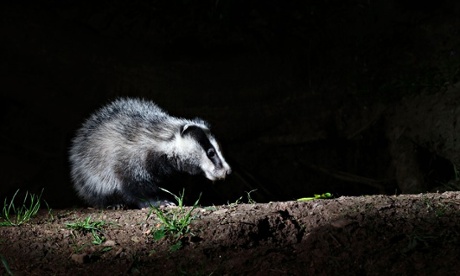
After 10 years of being shut down, unable to buy or sell cattle on the open market, the farmer can now restock his dairy herd.
Given the relative calm so far this year, are farmers winning the battle? “I don’t think so,” said the dairy farmer. “The government was careless not to pay to have the badgers tested for TB when they were shot last year. If we knew that result then the public could see there was a reason for it – that the badger population is in the same distress as the bovine population. No farmer is anti-badger, we’re anti-sick badgers.”
The pilot cull – which will continue for another two years – has been hugely divisive, and confrontations in the zones remain certain. At times, however, farmers and anti-cull campaigners don’t sound completely estranged.
“We’ve reconnected with the countryside doing this,” said Paul Smith, sitting by the sett whose residents he helped save from being shot last year. “We’ve got to realise what the enemy is – it’s not farmers nor the badger, it’s bovine TB. There’s got to be some reconciliation but who would broker that? It’s got to be government led.”
A few miles away, the dairy farmer was similarly measured. “I’ve got nothing against the protesters – I see their views entirely. But a cow has got a right to life as well as a badger. I’m not anti-wildlife, we’ve got to rub along together, I don’t want to annihilate anything.”











